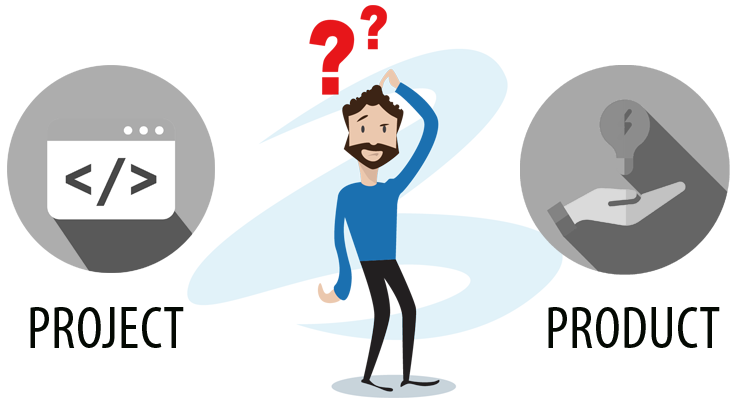
How Do Product and Project Risks Impact Testing?
Using the best test management tools can help you assess the functionality and stability of a digital product. However, during the testing process, a QA manager encounters many risks, and the success of your entire project depends on how well you deal with risks. Normally, there are two basic types of risks QA managers encounter regularly:
- Product Risks
- Project Risks
In this post, we’ll dig deep into these risks and discuss ways through which these risks can be mitigated without wasting much time, money, and resources.
What are Product Risks?
Product risks indicate towards the possibility that a software, app, or digital product might not be able to meet user requirements and satisfy expectations. Companies look to avoid such risks where the software or app might not have the functionality or features specified by the customers or stakeholders. Hence, to ensure great customer experience and meet client expectations, product managers, QA engineers, and testers try to mitigate these risks as soon as possible.
What are Project Risks?
Testing is an integral part of any app or software development cycle. Hence, every risk associated with this project can also directly or indirectly affect the test cycle. This is why testing risks can also be considered project risks. These risks are associated with every process of a project. In order to launch a flawless digital product successfully, QA managers, engineers, and testers are required to identify, prioritize, and manage project risks. The QA team should have an effective risk mitigation plan in place.
4 Ways to Mitigate Project Risks
Here are four ways through which you can mitigate project risks:
Communicate Risks to Others
If you spot a risk or potential vulnerability in the digital product you’re working on, you should notify your team first. Risk communication is crucial to eliminate or mitigate risks before they appear. With consistent communication, QA managers can tackle some of the most complicated issues and find the best solutions. Discussing the risk with your team can also help you form a Plan B if things don’t go as expected. While discussing a risk, make sure you discuss its probability, impact on your project, and how it can be mitigated efficiently. Conduct a team meeting in an environment where all participants can offer valuable suggestions and help develop an effective risk mitigation strategy.
Prioritize Risks
Usually, QA managers face two types of risks: high-degree risks and low-degree risks. As the name suggests, the outcome of low-degree risks is easily manageable, and mitigating such risks is much easier. However, QA managers must have an effective plan to deal with high-degree risks. Otherwise, such risks may lead to severe consequences and can halt the progress of your project for an extended period. Moreover, some high-degree risks impact the project more than others. So, make sure you categorize project risks based on their priorities and handle those risks first that’ll impact your project the most.
Analyze Risks and Create a Response Strategy
Besides measuring success, QA managers must also analyze risks and measure their impacts. This can help QA managers take serious steps to protect a project from high-degree risks. Remember, risk analysis is not a one-dimensional process. QA managers must also understand the risk’s nature and impact on the project. Sometimes, the risk may seem relatively harmless. But, when it happens, it has serious repercussions.
Implement Responses ASAP!
Once you have a plan in place, execute it immediately. To mitigate the risks as much as possible, it’s important not to delay execution. If the effects of the risks are minimal and manageable, then accepting that risk is the best option. However, if the risk has serious repercussions, it’s best to modify the project to avoid or minimize the risk.
4 Ways to Mitigate Product Risks
Here are four fantastic project management tips for mitigating product risks:
Identify the Most Critical Risks
Just like project risks, product risks should also be prioritized based on their potential impact and criticality. You must identify the most significant risks to your digital product’s success. There are three types of product risks QA managers usually encounter:
Competitor Risk:
Is your software solution superior to your competitor’s product? What are the differences?
Solution Risk:
Does the end-product meet client requirements? Does your solution directly target the customer’s problem? If yes, then is the solution viable and valuable?
Customer Risk:
Do your target customers need your digital product? If yes, then what purpose does it serve?
Analyzing these questions helps QA managers identify product risks and create a strategy accordingly.
Follow Human-Centric Designs
Samsung Galaxy S3 – Designed for Humans
Remember this advertisement? This was one of the most successful smartphone marketing campaigns. People love digital products with human-centered designs. You can add as many features as you want. But, as long as your product design is not based on the understanding and needs of your target audience, it won’t create an impact on the market. To create a successful digital product, a QA manager must understand the needs of their customers and develop product and QA strategies accordingly.
Prioritize Testing Project Risks
It’s better to test these risks as soon as possible. Delaying it will only increase the time and cost of the overall project. So, if your product’s development is underway and you find a high-degree risk, it’s better to prioritize it over other processes in the pipeline. If you find a risk at the beginning of proving your entire hypothesis wrong, it’s better to abandon the product with minimum time and resources invested.
Keep Learning
Ultimately, you can’t eradicate all product and project risks. Test is the solution. You will have to take some risks, and they’ll have consequences that’ll create different levels of impact on your project. As mentioned above, a low-degree risk might turn out to be a high-degree risk. You will face failures. However, it’s important to learn from them and not repeat the same mistakes.
By analyzing all risks perfectly, you’ll be able to create the perfect product development and testing strategy. You can also use the Test Management Tool based on your client’s requirements.




